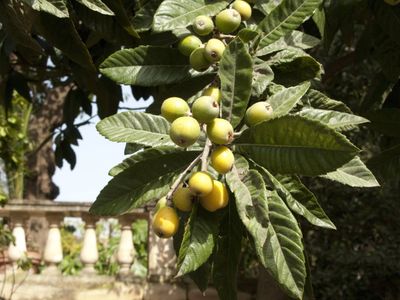Why is My Loquat Tree Dropping Leaves?
There are a couple of reasons for loquat leaf loss. Since they are subtropical, loquats do not respond favorably to drops in temperature, specifically in the spring when Mother Nature tends to be rather moody. When there is a sudden dip in temps, the loquat may respond by losing leaves. With regard to temperature, loquat trees will tolerate temperatures down to 12 degrees F. (-11 C.), which means that they can be grown in USDA zones 8a through 11. Further dips in temperature will damage flower buds, kill mature flowers, and may even result in leaves falling off a loquat. Cold temperatures aren’t the only culprit, however. Loquat leaf loss may be the result of high temperatures as well. Dry, hot winds combined with summer heat will scorch the foliage, resulting in leaves falling off the loquat.
Additional Reasons for Loquat Leaf Loss
Loquat leaf loss might be the result of insects, either due to feeding or in the case of aphids, the sticky honeydew left behind that attracts fungal disease. Damage due to insect infestations most often afflicts fruit rather than foliage though. Both fungal and bacterial diseases may cause foliage loss. Loquats are particularly susceptible to fire blight, which is spread by bees. Fire blight is most common in regions with high humidity or where there is significant late spring and summer rains. This disease attacks young shoots and kills their leaves. Preventative bactericides will help control fire blight but, once it is infected, shoots must be trimmed back into healthy green tissue. Then the infected portions must be bagged and removed or burned. Other diseases such as pear blight, cankers, and crown rot may all also afflict loquat trees. Lastly, misapplication of fertilizer or lack thereof can result in defoliation to a certain extent. Loquat trees should have regular, light applications of a nitrogen rich fertilizer. Giving the trees too much fertilizer can open them up to fire blight. The basic recommendation for trees that are 8 to 10 feet (2-3 m.) in height is about a pound (0.45 kg) of 6-6-6 three times per year during active growth.
